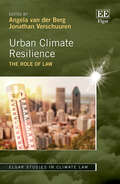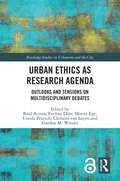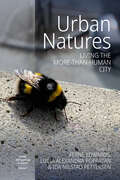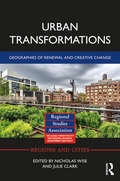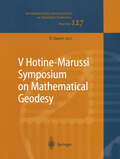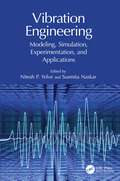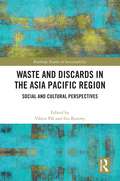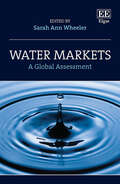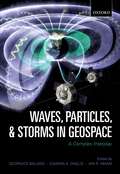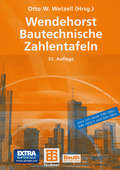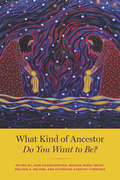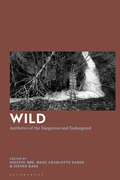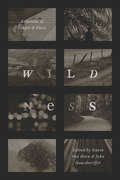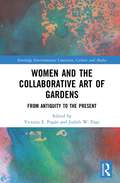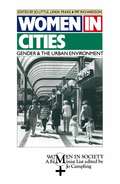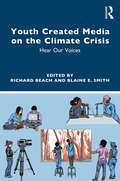- Table View
- List View
Urban Climate Resilience: The Role of Law (Elgar Studies in Climate Law)
This significant book addresses the most important legal issues that cities face when attempting to adapt to the changing climate. This includes how to become more resilient against the impacts of climate change such as sea level rise, increases in the intensity and frequency of storms, floods, droughts, and extreme temperatures.A range of expert contributors are brought together to assess the current state of climate change law and policy at the city level, featuring analysis of key legal instruments that can help urban societies adapt to, and cope with, the changing climate. Chapters contain comparative assessments of urban climate change policies in cities across the world, in both developed and developing countries, including Ghana, South Africa, Indonesia, the Netherlands and the US. Additionally, the book analyses legal approaches, relying on planning law and other legal instruments in the hands of city governments, which can aid in combating specific problems such as the urban heat island effect.Providing an up-to-date analysis of climate change adaptation and mitigation law at the level of cities, Urban Climate Resilience will be a key resource for academics and students of environmental law, public international law, urban planning and sustainability. The lessons for future policies and laws to create more climate resilient cities will also be useful for local policymakers, regulators and city government officials working on climate change at the local level.
Urban Environmental Education Review (Cornell Series in Environmental Education)
Urban Environmental Education Review explores how environmental education can contribute to urban sustainability. Urban environmental education includes any practices that create learning opportunities to foster individual and community well-being and environmental quality in cities. It fosters novel educational approaches and helps debunk common assumptions that cities are ecologically barren and that city people don't care for, or need, urban nature or a healthy environment.Topics in Urban Environmental Education Review range from the urban context to theoretical underpinnings, educational settings, participants, and educational approaches in urban environmental education. Chapters integrate research and practice to help aspiring and practicing environmental educators, urban planners, and other environmental leaders achieve their goals in terms of education, youth and community development, and environmental quality in cities.The ten-essay series Urban EE Essays, excerpted from Urban Environmental Education Review, may be found here: naaee.org/eepro/resources/urban-ee-essays. These essays explore various perspectives on urban environmental education and may be reprinted/reproduced only with permission from Cornell University Press.
Urban Ethics as Research Agenda: Outlooks and Tensions on Multidisciplinary Debates (Routledge Studies in Urbanism and the City)
This book provides an outline for a multidisciplinary research agenda into urban ethics and offers insights into the various ways urban ethics can be configured. It explores practices and discourses through which individuals, collectives and institutions determine which developments and projects may be favourable for dwellers and visitors traversing cities. Urban Ethics as Research Agenda widens the lens to include other actors apart from powerful individuals or institutions, paying special attention to activists or civil society organizations that express concerns about collective life. The chapters provide fresh perspectives addressing the various scales that converge in the urban. The uniqueness of each city is, thus, enriched with global patterns of the urban. Local sociocultural characteristics coexist with global flows of ideas, goods and people. The focus on urban ethics sheds light on emerging spaces of human development and the ways in which ethical narratives are used to mobilize and contest them in terms of the good life. This timely book analyses urban ethical negotiations from social and cultural studies, particularly drawing on anthropology, geography, and history. This volume will be of interest to scholars, researchers and practitioners interested in ethics and urban studies.
Urban Mobilities in the Global South (Transport and Mobility)
The book considers urban mobilities and immobilities in the Global South through an exploration of the theoretical and methodological entry points that can be used to further the agenda of transport planning. Transport system improvements can (and do) have complex and unequal impacts on different sectors of society. Conventional approaches to analysing travel demand and transport system performance developed in the ‘Global North’ are typically ill-equipped to identify and understand the complexities and inequities in urban areas of the Global South. Using case studies from urban Africa and Asia, the book addresses the need to understand the ‘lived world’ of mobilities and use this knowledge to address issues that are central to our urban existence in the 21st century.
Urban Mobilities in the Global South (Transport and Mobility)
The book considers urban mobilities and immobilities in the Global South through an exploration of the theoretical and methodological entry points that can be used to further the agenda of transport planning. Transport system improvements can (and do) have complex and unequal impacts on different sectors of society. Conventional approaches to analysing travel demand and transport system performance developed in the ‘Global North’ are typically ill-equipped to identify and understand the complexities and inequities in urban areas of the Global South. Using case studies from urban Africa and Asia, the book addresses the need to understand the ‘lived world’ of mobilities and use this knowledge to address issues that are central to our urban existence in the 21st century.
Urban Natures: Living the More-than-Human City (Urban Anthropology Unbound #1)
Efforts to create greener urban spaces have historically taken many forms, often disorganized and undisciplined. Recently, however, the push towards greener cities has evolved into a more cohesive movement. Drawing from multidisciplinary case studies, Urban Natures examines the possibilities of an ethical lively multi-species city with the understanding that humanity’s relationship to nature is politically constructed. Covering a wide range of sectors, cities, and urban spaces, as well as topics ranging from edible cities to issues of power, and more-than-human methodologies, this volume pushes our imagination of a green urban future.
Urban Transformations: Geographies of Renewal and Creative Change (Regions and Cities)
Economic restructuring and demographic change have in recent years placed much strain on urban areas with the effects falling disproportionately on neighbourhoods that were previously underpinned by industry and manufacturing. This has presented policy makers and city planners with a binary choice: to resist change and stagnate or to change and attempt to keep up with the pace of global demand. This edited book tells the story of how urban transformation impacts on people’s lives and everyday interactions – to question where and to whom benefit accrues from these changes. Urban Transformations offers insight into both risk and reward as local communities and public authorities creatively address the challenge of building vital and sustainable urban environments. The authors in this edited collection argue that understanding the specifics of community, space and place is crucial to delivering insights into how, where, when, why and for whom urban areas might successfully transform. The chapters investigate urban change using a range of approaches, and case studies from the four corners of the Earth – from the United States to Iran; from the United Kingdom to Canada. The varying scales at which governance or regeneration initiatives operate, the nature and composition of urban communities, and the local or global interests of different private sector actors all raise questions for urban policy and practice. It is important to not only consider the drivers of regeneration, but its beneficiaries need to be identified. This edited volume addresses and elaborates on critical issues facing urban transformation and renewal as a basis for future discussion on strategies for ‘successful’ urban transformation.
V Hotine-Marussi Symposium on Mathematical Geodesy: Matera, Italy June 17–21, 2003 (International Association of Geodesy Symposia #127)
Just as in the era of great achievements by scientists such as Newton and Gauss, the mathematical theory of geodesy is continuing the tradition of producing exciting theoretical results, but today the advances are due to the great technological push in the era of satellites for earth observations and large computers for calculations. Every four years a symposium on methodological matters documents this ongoing development in many related underlying areas such as estimation theory, stochastic modelling, inverse problems, and satellite-positioning global-reference systems. This book presents developments in geodesy and related sciences, including applied mathematics, among which are many new results of high intellectual value to help readers stay on top of the latest happenings in the field.
Valuing the Environment: Six case studies
The 'Pearce Report', Blueprint for a Green Economy, puts the role which monetary evaluation of environmental costs and benefit. can play firmly into the public eye. This book goes further and looks at six countries where such evaluation techniques are applied and at the obstacles to their further use. The case studies, written by leading experts in each nation, show how these methods are being taken up in the UK, Norway and Italy and the ways in which they are already extensively in use in the USA, Germany and the Netherlands. The authors also describe the obstacles to their use, the lack of knowledge of environmental economics at government level; the competition from other government priorities; the failure of environmental groups to grasp the importance of financial evaluation to their cause. But, as this book makes clear, significant advances are being made, both in the implementation of these economic techniques and, above all, in striking and yet further developments in economic thinking.
Vibration Engineering: Modeling, Simulation, Experimentation, and Applications
Vibration Engineering presents recent developments in the field of engineering, encompassing industrial norms, applications within the finite element method, infrastructure safety assessment, and active vibration control strategies. It offers a study in seismic vibration control and analysis for building structures and liquid storage tanks.Spanning across the multiple domains of vibration engineering, the book highlights machinery diagnostics, modal analysis, energy harvesting, balancing, vibration isolation, and human-vibration interaction. It discusses experimental fault identification in journal bearings using vibration-based methods. This book also considers advances in vibration-based structural health monitoring of civil infrastructures.This book will be a useful reference for industry professionals and engineers facing challenges while dealing with the vibrations in the fields of mechanical, aerospace, structural, and civil engineering.
The Violence of Conservation in Africa: State, Militarization and Alternatives
Offering insights on violence in conservation in Africa, this timely book demonstrates how and why the state pursues conservation objectives to the detriment of its citizens. It focuses on how the dehumanization of black people and indigenous groups, the insertion of global green agendas onto the continent, a lack of resource sovereignty, and neoliberal conservation account for why violence is a permanent feature of conservation in Africa. Chapters uncover various forms of violence experienced on the continent, revealing the local and global conditions that enable them, and propose pathways towards non-violent conservation. The book concludes that the ideology of conservation is also an ideology about people. Crucially, it highlights the implications of increasing investment in violent instruments and the institutionalization of militarized approaches for conservation, the state, and ordinary people. Scholars and students of political ecology and environmental policy and planning will greatly benefit from this book’s drawing together of perspectives encompassing green violence and the militarization of conservation. It will also be an invigorating read for African studies researchers looking at coloniality and the re-evaluation of the African state, particularly through the lens of nature conservation.
Waste and Discards in the Asia Pacific Region: Social and Cultural Perspectives (Routledge Studies in Sustainability)
This book uncovers, explores and analyses the cultural and social factors and values that lie behind waste making, recycling and disposal in the Asia Pacific region, where impressive economic growth has led to significant increases in production, consumption and concomitant waste production. This volume demonstrates the immense scope of waste as a multi-sectoral phenomenon, covering discussions on food, menstrual products, sewage, electronics, scrap, nuclear waste, plastics, and even entire villages as they are submerged underwater by dam building, considered expendable in favour of economic growth. It discusses the wide range of approaches and contexts through which people interact with waste, including socio-economic analysis, participatory observation, laboratory science, art, video, installations, literature and photography. Case studies focusing on India, China and Japan, in addition to other regional examples, demonstrate the ubiquity of waste, materially and geographically. It examines the duality of waste management, fostering community building while simultaneously excluding marginalised groups; how it can be linked to efforts creating circular economies, to then reappear in oceanic garbage patches; or technical waste repurposed for high-tech laboratory research before being discarded once again. This timely and wide-ranging collection of essays will be an important read for scholars, researchers and students in sustainability, development studies, discard studies, and social and cultural history, particularly focusing on countries in the Asia-Pacific.
Water Markets: A Global Assessment
Exploring water scarcity issues in light of the growing crisis in global water management, this book examines the applicability of water markets. It provides an overview and understanding of the presence of water markets across the globe, analysing the ways in which different countries and regions are grappling with water scarcity. This timely book offers an insight into the benefits of water markets, and their identified market failures. A water market framework is applied to key case studies, highlighting that the majority of regions have not had sufficient water reforms to allow for the introduction of water markets without negative social consequences. The book addresses existing hydrological and institutional capacity across countries and areas where water reform is needed, and lessons are provided for future water markets, taking into account these limitations. The case studies of different countries tackling water scarcity issues and reform will make this an essential read for scholars of environmental studies, water economics, sustainability management and environmental policies. It will also be an invigorating book for water policy-makers interested in lessons for change, and in how to better implement reforms for water markets to help address both water scarcity and improve productivity.
Wave Motion: Proceedings of a Conference in Honor of the 60th Birthday of Peter D. Lax (Mathematical Sciences Research Institute Publications #7)
The 60th birthday of Peter Lax was celebrated at Berkeley by a conference entitled Wave Motion: theory, application and computation held at the mathematical Sciences Research Institute, June 9-12, 1986. Peter Lax has made profound and essential contributions to the topics described by the title of the conference, and has also contributed in important ways to many other mathematical subjects, and as a result this conference volume dedicated to him includes research work on a variety of topics, not all clearly related to its title.
Waves, Particles, and Storms in Geospace: A Complex Interplay
Geospace features highly dynamic populations of charged particles with a wide range of energies from thermal to ultra-relativistic. Influenced by magnetic and electric fields in the terrestrial magnetosphere driven by solar wind forcing, changes in the numbers and energies of these particles lead to a variety of space weather phenomena, some of which are detrimental to space infrastructure. This book presents an overview of the latest discoveries and current scientific understanding of the coupling of electromagnetic waves and charged particles during magnetic storms, and explains the observed dynamics of these particle populations. The book furthermore includes investigations relevant to understanding and forecasting this space environment and the adverse impacts of space weather. High-energy electrons and ions in the Van Allen radiation belts and the ring current are of particular interest and importance with regard to the operation of space-based technological infrastructure upon which 21st century civilisation increasingly relies. This book presents the latest research on the sources, transport, acceleration and loss of these energetic particle populations, as well as their coupling during geospace magnetic storms.
Wendehorst Bautechnische Zahlentafeln
Jetzt mit neuer DIN 1052 Holzbau, DIN 1053-100 für den Mauerwerksbau und DIN 1054 im Abschnitt Geotechnik. Der Wendehorst, seit 70 Jahren unentbehrliches Standardwerk für die Bautechnik, wurde für die 31. Auflage vollständig überarbeitet und aktualisiert. So sind zum Beispiel der Abschnitt Stahlbeton- und Spannbetonbau um die Einarbeitung des Heftes 525 des DafStB ergänzt und der Abschnitt Statik- und Festigkeitslehre in seiner Darstellung noch anschaulicher gestaltet worden. Neu hinzugekommen sind unter anderem auch Themen wie "Erdbebensicheres Bauen" im Abschnitt Lastannahmen und "Geotechnische Vermessungssysteme" im Abschnitt Vermessung. Die ideale Ergänzung zu den Zahlentafeln ist die neue Beispielsammlung Wendehorst Beispiele aus der Baupraxis. Hier werden Normen und Formeln anhand von durchgerechneten Aufgaben erklärt. Damit sind beide Bücher gemeinsam eine wichtige Grundlage in Studium und Praxis.
What Kind of Ancestor Do You Want to Be?
As we face an ever-more-fragmented world, What Kind of Ancestor Do You Want to Be? demands a return to the force of lineage—to spiritual, social, and ecological connections across time. It sparks a myriad of ageless-yet-urgent questions: How will I be remembered? What traditions do I want to continue? What cycles do I want to break? What new systems do I want to initiate for those yet-to-be-born? How do we endure? Published in association with the Center for Humans and Nature and interweaving essays, interviews, and poetry, this book brings together a thoughtful community of Indigenous and other voices—including Linda Hogan, Wendell Berry, Winona LaDuke, Vandana Shiva, Robin Kimmerer, and Wes Jackson—to explore what we want to give to our descendants. It is an offering to teachers who have come before and to those who will follow, a tool for healing our relationships with ourselves, with each other, and with our most powerful ancestors—the lands and waters that give and sustain all life.
When Fracking Comes to Town: Governance, Planning, and Economic Impacts of the US Shale Boom
When Fracking Comes to Town traces the response of local communities to the shale gas revolution. Rather than cast communities as powerless to respond to oil and gas companies and their landmen, it shows that communities have adapted their local rules and regulations to meet the novel challenges accompanying unconventional gas extraction through fracking. The multidisciplinary perspectives of this volume's essays tie together insights from planners, legal scholars, political scientists, and economists. What emerges is a more nuanced perspective of shale gas development and its impacts on municipalities and residents. Unlike many political debates that cast fracking in black-and-white terms, this book's contributors embrace the complexity of local responses to fracking. States adapted legal institutions to meet the new challenges posed by this energy extraction process while under-resourced municipal officials and local planning offices found creative ways to alleviate pressure on local infrastructure and reduce harmful effects of fracking on the environment. The essays in When Fracking Comes to Town tell a story of community resilience with the rise and decline of shale gas production. Contributors: Ennio Piano, Ann M. Eisenberg, Pamela A. Mischen, Joseph T. Palka, Jr., Adelyn Hall, Carla Chifos, Teresa Córdova, Rebecca Matsco, Anna C. Osland, Carolyn G. Loh, Gavin Roberts, Sandeep Kumar Rangaraju, Frederick Tannery, Larry McCarthy, Erik R. Pages, Mark C. White, Martin Romitti, Nicholas G. McClure, Ion Simonides, Jeremy G. Weber, Max Harleman, Heidi Gorovitz Robertson
Wild: Aesthetics of the Dangerous and Endangered
In this interdisciplinary work, philosophers from different specialisms connect with the notion of the wild today and interrogate how it is mediated through the culture of the Anthropocene. They make use of empirical material like specific artworks, films and other cultural works related to the term 'wild' to consider the aesthetic experience of nature, focusing on the untamed, the boundless, the unwieldy, or the unpredictable; in other words, aspects of nature that are mediated by culture. This book maps out the wide range of ways in which we experience the wildness of nature aesthetically, relating both to immediate experience as well as to experience mediated through cultural expression. A variety of subjects are relevant in this context, including aesthetics, art history, theology, human geography, film studies, and architecture. A theme that is pursued throughout the book is the wild in connection with ecology and its experience of nature as both a constructive and destructive force.
Wildness: Relations of People and Place
Whether referring to a place, a nonhuman animal or plant, or a state of mind, wild indicates autonomy and agency, a will to be, a unique expression of life. Yet two contrasting ideas about wild nature permeate contemporary discussions: either that nature is most wild in the absence of a defiling human presence, or that nature is completely humanized and nothing is truly wild. This book charts a different path. Exploring how people can become attuned to the wild community of life and also contribute to the well-being of the wild places in which we live, work, and play, Wildness brings together esteemed authors from a variety of landscapes, cultures, and backgrounds to share their stories about the interdependence of everyday human lifeways and wildness. As they show, far from being an all or nothing proposition, wildness exists in variations and degrees that range from cultivated soils to multigenerational forests to sunflowers pushing through cracks in a city alley. Spanning diverse geographies, these essays celebrate the continuum of wildness, revealing the many ways in which human communities can nurture, adapt to, and thrive alongside their wild nonhuman kin. From the contoured lands of Wisconsin’s Driftless region to remote Alaska, from the amazing adaptations of animals and plants living in the concrete jungle to indigenous lands and harvest ceremonies, from backyards to reclaimed urban industrial sites, from microcosms to bioregions and atmospheres, manifestations of wildness are everywhere. With this book, we gain insight into what wildness is and could be, as well as how it might be recovered in our lives—and with it, how we might unearth a more profound, wilder understanding of what it means to be human. Wildness: Relations of People and Place is published in association with the Center for Humans and Nature, an organization that brings together some of the brightest minds to explore and promote human responsibilities to each other and the whole community of life. Visit the Center for Humans and Nature's Wildness website for upcoming events and a series of related short films.
Women and the Collaborative Art of Gardens: From Antiquity to the Present (Routledge Environmental Literature, Culture and Media)
Women and the Collaborative Art of Gardens explores the garden and its agency in the history of the built and natural environments, as evidenced in landscape architecture, literature, art, archaeology, history, photography, and film. Throughout the book, each chapter centers the act of collaboration, from garden clubs of the early twentieth century as powerful models of women’s leadership, to the more intimate partnerships between family members, to the delicate relationship between artist and subject. Women emerge in every chapter, whether as gardeners, designers, owners, writers, illustrators, photographers, filmmakers, or subjects, but the contributors to this dynamic collection unseat common assumptions about the role of women in gardens to make manifest the significant ways in which women write themselves into the accounts of garden design, practice, and history. The book reveals the power of gardens to shape human existence, even as humans shape gardens and their representations in a variety of media, including brilliantly illuminated manuscripts, intricately carved architectural spaces, wall paintings, black and white photographs, and wood cuts. Ultimately, the volume reveals that gardens are best apprehended when understood as products of collaboration. The book will be of interest to scholars and students of gardens and culture, ancient Rome, art history, British literature, medieval France, film studies, women’s studies, photography, African American Studies, and landscape architecture.
Women in Cities: Gender and the Urban Environment (Women in Society: A Feminist List)
...a readable, thorough and stimulating introduction to this subject.' Critical Social Policy
World Review: Environmental and Sustainability Education in the Context of the Sustainable Development Goals
The global landscape of education has been reshaped by the COVID-19 pandemic, revealing the various challenges faced by countries worldwide. This book provides a comprehensive exploration of Environmental and Sustainability Education (ESE) across different countries, offering unique insights into their histories, challenges, achievements, and future ESE needs. From Africa to Oceania, the book delves into the vital role of ESE in the context of the UN Sustainable Development Goals. It highlights the diverse national discourses and the flexibility required to deliver effective global education programs. ESE practitioners, researchers, and policymakers worldwide will find inspiration and invaluable perspectives in this book.
Youth Created Media on the Climate Crisis: Hear Our Voices
This timely book provides effective methods and authentic examples of teaching about climate change through digital and multimodal media production in the English Language Arts classroom. The chapters in this edited volume demonstrate the benefits of addressing climate change in the classroom through innovative media production and cover a range of different types of media, including video/digital storytelling, social media, art, music, and writing, with rich resources for instruction in every chapter. Through the engaging ideas and strategies, the contributors equip educators with the critical tools for supporting students’ media production. In so doing, they offer new perspectives on how students can employ media and production techniques to critique the status quo, call for change, and acquire new literacy skills. As the effects of the climate crisis become increasingly visible to the youth population, this book helps foster and support youth agency and activism. Youth Media Creation on the Climate Change Crisis: Hear Our Voices is a necessary text for students, preservice teachers, and educators in literacy education, media studies, social and environmental studies, and STEM education. The eBook+ version of the text features embedded audio and video components as well as interactive links to reflect the multimodal nature of students’ work, spotlighting how youth media production supports the development of students’ critical literacy skills and shapes their voices and identities.
